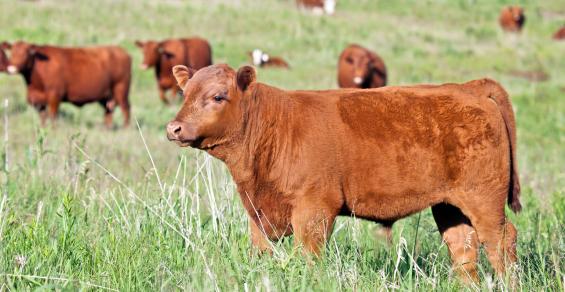Medicating an entire group of newly arrived cattle can help control respiratory disease.
Concerning animal antibiotic usage, veterinarians from Boehringer Ingelheim say using targeted metaphylaxis treatments to medicate an entire group of purchased livestock upon arrival to the farm or feedlot can help.
Dan Cummings, professional services veterinarian for Boehringer Ingelheim based in Hopkinsville, Ky., says a strategic usage of this treatment can benefit cattle health, especially when combating respiratory diseases. “It’s an effective tool that we’ve had for quite some time, especially with some of the newer anti-infectives or antibiotics that are available,” he says.
“Some of the labeled indications that the FDA has allowed us to look at is for the ‘control’ of bovine respiratory disease or pneumonia,” Cummings says. “As an industry, we have the ability to implement metaphylaxis, or as some refer to it as mass treatment to this group of calves. This gives us an opportunity to decrease morbidity in calves that we know are at a higher risk for developing pneumonia.”
Groups that may benefit from this treatment are often new arrivals to a stocker or backgrounding system, and are high risk of developing pneumonia or other respiratory diseases.
Cummings says a number of factors and veterinary recommendations can determine if a group of calves might be at risk — and if metaphylaxis might be a good course of action.
“We want to think about the common stressors placed on calves, such as the amount of travel or distance, because the longer the distance, perhaps the higher risk of pneumonia developing,” he says. “Also, consider their origin, whether they came through a sale barn or livestock market versus coming right off the farm or ranch.”
Research shows calves coming through a market or auction may be at a higher risk of developing pneumonia. “Weight, class, gender, season, etc., etc. — there’s lots of factors that our managers and owners or producers, as well as our veterinarians, have to consider in order to make the best decision,” he says.
Many producers, veterinarians and others involved in animal health are working under USDA guidance to help prevent or reduce antimicrobial resistance.
“It’s not an easy decision to make, and it’s one that we don’t take lightly, especially now that we tend to be more cognizant and aware of the judicious use of antibiotics,” he says. “We want to make sure as an industry that we’re using those [antibiotics] in the most appropriate positions, and metaphylaxis can certainly be one of those.”
“Say I get 50 calves from a couple of sale barns, and those calves get commingled and housed together,” Cummings says. “They’re lighter-weight calves, so they’re at risk of developing pneumonia. But I want to background those calves and add some value to them.”
From this scenario, producers can see the risk factors for respiratory diseases, and then work with their veterinarian for recommendations. “Depending on what I see and what my vet recommends, I might choose to administer an antimicrobial to all 50 of those calves as soon as I get them to try to prevent and control respiratory disease,” he says.
This treatment sees its best results when coupled with proper management practices, including animal husbandry, parasite control, adequate nutrition and low-stress handling, Cummings says.
“We can really add value to a set of calves through improved health that otherwise might not be as valuable, leading to increased returns based on performance,” he says. “Average daily gain and weight gain are really a proxy for health. We know that when the cattle are healthy, they’re going to gain better, and metaphylaxis is one tool that allows us to capture that value.”



